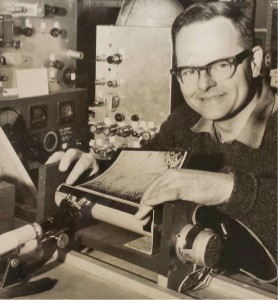Defense Engineer and Backyard Innovator

Fourth-generation engineer Wendell G. Anderson of Medford, N.J., died Dec. 22, 2013, at the age of 96. He spent most of his career at the Radio Corp. of America (RCA) and worked on antisubmarine warfare, missile defense, and the Global Positioning System (GPS), among many other projects.
In 1965, Anderson became the first amateur radio operator to create a receiving station for weather satellite photos, using his home-built ham radio apparatus with a motor-controlled antenna mounted on a jungle gym in his Moores-town backyard. The received signals were converted to blinking lights. He used a microscope turned upside down to focus tiny spots of light onto film taped to a wooden rolling pin, with its spin and lateral motion precisely controlled by two motors. He developed the film negatives and printed the pictures in his basement photo lab. This became national news in 1966 after the launch of the satellite NIMBUS II and Anderson’s successful reception of its pictures.
“It was the first near-real-time reception of a weather picture,” Anderson’s daughter remembered for the Philadelphia Inquirer in an article reporting her father’s death. “The picture was taken, and 15 minutes later my dad had a print.”
Early in his career, after serving as a postwar Army radar engineer in the Philippines, Anderson taught electrical engineering at Syracuse University and then at Vanderbilt before beginning his career with RCA in 1955.
His wife of 56 years, Lillias Harris Anderson, BA’58, preceded him in death. He is survived by their three children, four grandchildren and two great-grandchildren. All three children and two of his grandchildren are also engineers.